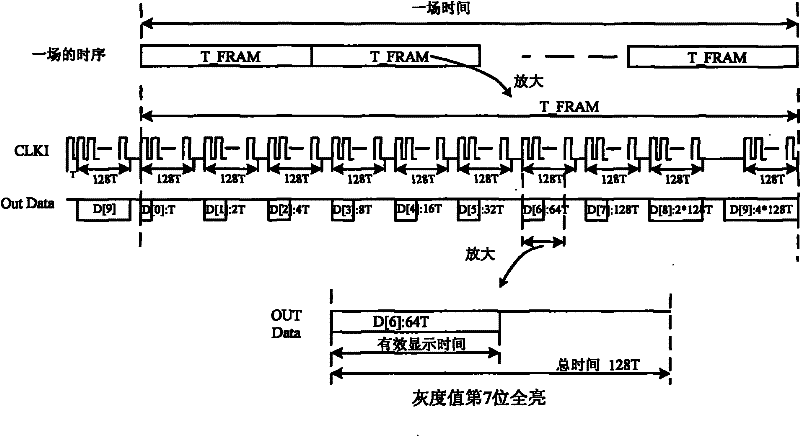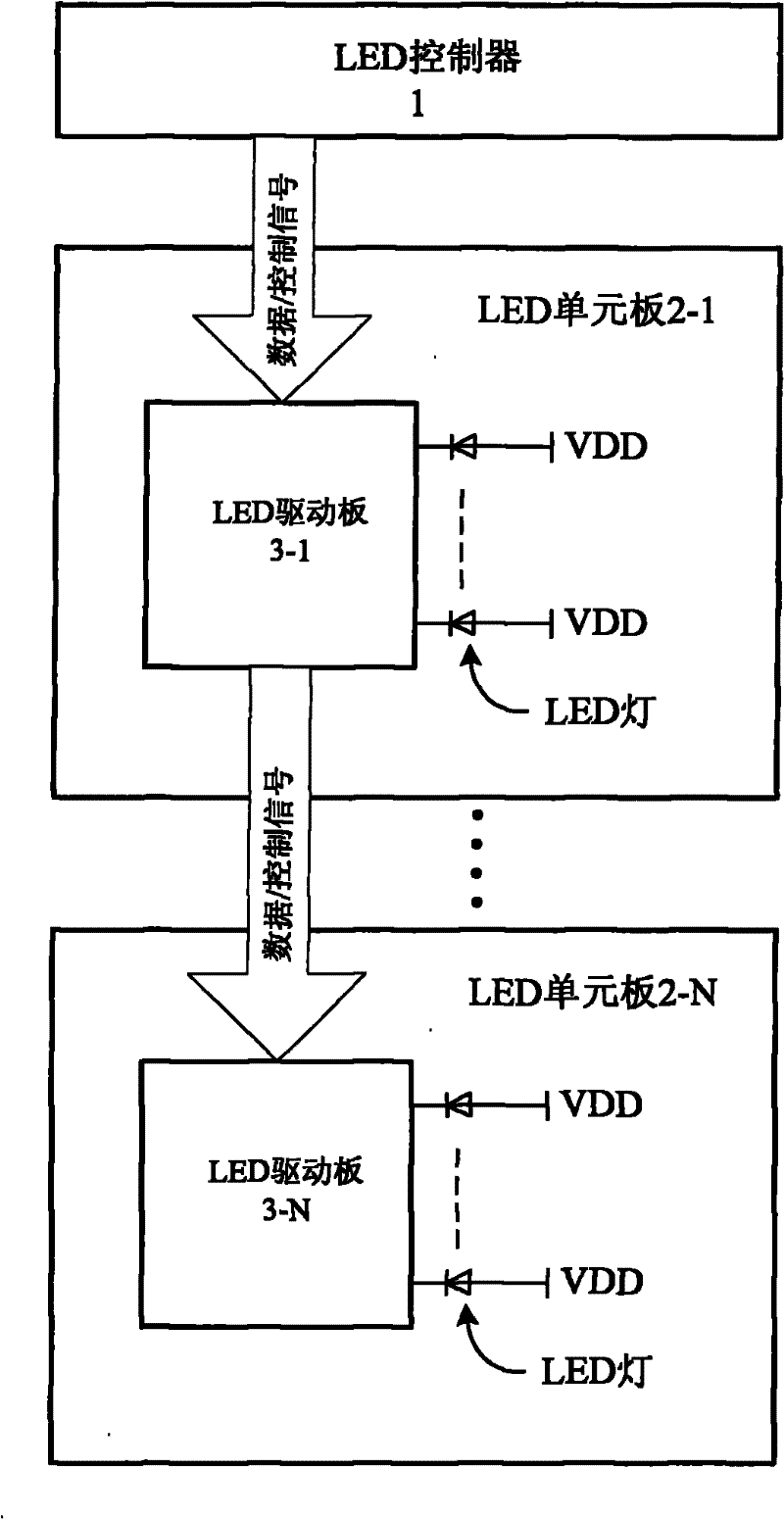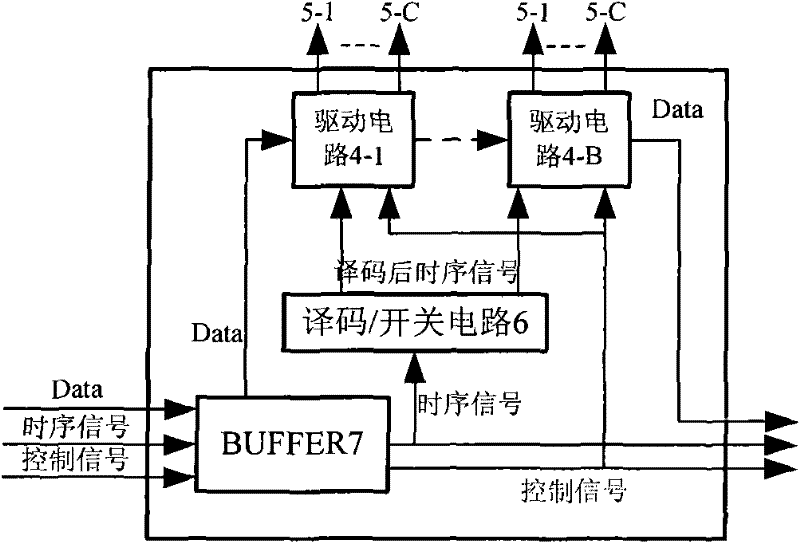LED display system having pulse scattering mode and method thereof
A display system and LED lamp technology, applied in static indicators, lighting devices, light sources, etc., can solve the problems of brightness loss, constant brightness calculation, uneven brightness feeling, etc., and achieve the effect of reducing flicker and brightness loss.
- Summary
- Abstract
- Description
- Claims
- Application Information
AI Technical Summary
Problems solved by technology
Method used
Image
Examples
Embodiment Construction
[0055] The content of the present invention will be further described below in conjunction with the LED display system.
[0056] figure 1 It is a schematic diagram of the timing of the traditional LED pulse display mode. Such as figure 1 As shown, in the shown T_FRAM time, a total of 10 times of display and shift are required, and the total time of T_FRAM is about 14*256T; in this T_FRAM, the brightness of a certain LED light is calculated as follows:
[0057] D[0]*1T+D[1]*2T+D[2]*4T+D[3]*8T+D[4]*16T+D[5]*32T+D[6]*64T+D [7]*128T+D[8]*2*128T+D[9]*4*128T.
[0058] It can be seen from the above: ①When a certain LED light is the brightest, its effective display time is (8*128-1)T, which is less than 14*128T of T_FRAM, and the brightness loss is greater than 40%; ②The high bit of the 10-bit gray value For example, the effective display time of the upper 3 bits accounts for 1 / 2 of the total time T_FRAM, which will make the brightness of the human eye feel very uneven, resulting ...
PUM
 Login to View More
Login to View More Abstract
Description
Claims
Application Information
 Login to View More
Login to View More - R&D
- Intellectual Property
- Life Sciences
- Materials
- Tech Scout
- Unparalleled Data Quality
- Higher Quality Content
- 60% Fewer Hallucinations
Browse by: Latest US Patents, China's latest patents, Technical Efficacy Thesaurus, Application Domain, Technology Topic, Popular Technical Reports.
© 2025 PatSnap. All rights reserved.Legal|Privacy policy|Modern Slavery Act Transparency Statement|Sitemap|About US| Contact US: help@patsnap.com



